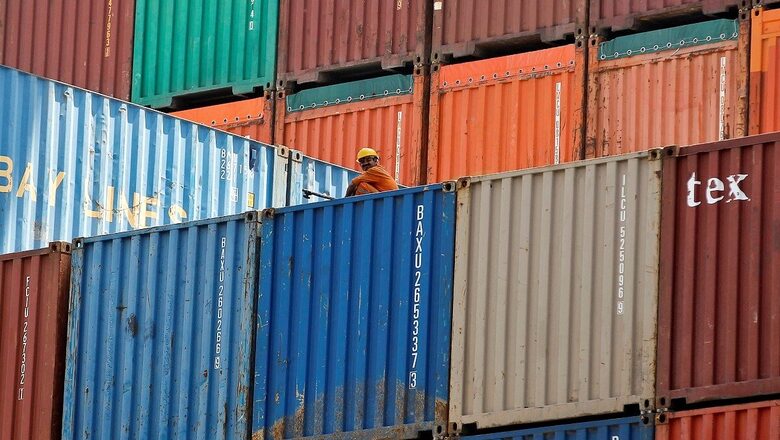
views
The course of history is often shaped by unexpected shocks, and the outbreak of COVID-19 is one such epoch-defining event that is resetting the international trade order and global supply chains. In the process of global companies, particularly Multi-National Corporations (MNCs), hedging against future production shocks, India has emerged as an attractive and important alternative link in the existing global supply chains.
The larger geopolitical scenario, India’s liberal FDI policy, sectoral schemes and structural reforms undertaken by the government, both at the Centre and at the state levels, and India’s large and rapidly enormous consumer market are among the several factors that underline India’s attractiveness as an FDI destination.
In the post reforms era, India’s strength in attracting FDI has been growing steadily. India’s FDI inflows rose from $4.02 billion to $73 billion in the years 2000-2020. Additionally, the average growth rate of FDI inflows has also increased significantly in the last five years. On an average, the inflows increased at a rate of 1.25% from 2010 to 2014. However, from 2015 to 2020, the inflows grew at a stellar pace of 12.83%. Moreover, in 2019-20, they have grown at 18%.
Additionally, the growth rate of FDI captured in the FDI to GDP ratio has also shown a quantum leap. A comparison of FDI to GDP ratio of the BRICS countries from 2000 to 2018 shows how India’s FDI inflow has doubled from .77% of GDP to 1.55% of GDP. Moreover, during the same time period Chinese FDI inflow as a percentage of their GDP has fallen from 3.48% to 1.50%.
The outbreak of COVID-19 has witnessed China come under scrutiny from the world community over allegations of concealment of critical information which could have saved thousands of lives across the world, and a rethink of over-dependence on Chinese supply chains has been happening the world over. Japan has gone to the extent of creating a special economic package worth $2.2 billion for its companies to re-shore their operations to other companies. As on date, there are nearly 33,050 Japanese establishments doing business in China, compared to just 5,100 in India. India is actively in talks with potential investors of different countries to persuade them to shift base to India by providing an enabling environment.
Growth of the manufacturing sector in India has largely been hindered by the legacy issues associated with land, labour and logistics, the most crucial factors of production. The government is developing a land pool of around 461,589 hectares for new investments, thus greatly reducing the transaction costs for investors. India is also undertaking broad reforms relating to labour issues. Reforms in these critical factors of production have opened multiple opportunities for foreign investors to invest in India by sending positive signals.
The establishment of a strong base is sine qua non for the growth and stability of the manufacturing sector, and investments in the sector need to grow significantly in order to achieve the same. A strong incentive mechanism is provenly instrumental in channelizing fresh investments. The recently announced production-linked incentive schemes for mobile phone manufacturing, pharmaceutical drugs and medical devices have generated keen interest among investors, who are looking to seize opportunities in these sectors. These schemes have been designed with the intent of creating scale and size, with vertically integrated units, in the Indian manufacturing sector. Similar, schemes for other sectors of strength are on the anvil and once announced, these schemes will further strengthen India’s position as a credible alternative to China.
India has one of the most liberal FDI policies in the world, where foreign investments of up to 100% are permitted under the automatic route in most of the sectors of the economy. Foreign investments in only a few sectors of the economy are subject to restrictions in terms of approval requirements or foreign investment caps. The number of sectors which are not open for FDI is negligible, and there are only a few sectors e.g. the agriculture sector, where foreign investments are permitted for only a limited set of activities.
Moreover, in the recently announced Atma Nirbhar scheme, the honourable FM unveiled multiple FDI related reforms. The announcement to increase FDI investments in the defence manufacturing sector by upto 74% is indicative of the liberal intent of the government in the context of FDI.
The liberal FDI policy regime has helped India reap benefits over the years in terms of the larger inflows of foreign investments, which grew at a rate faster than the GDP growth rate of the country. In the year 2001, India’s GDP was $479 billion, and India’s GDP now is $2.72 trillion (approx growth of 5.6x). During the same period, FDI inflows in India grew from $4.03 billion to $73 billion (approx growth of 18x).
It is said that in adversity lies opportunity. India is looking to leverage its intent to drive its economic growth with a strong manufacturing sector engine that is fuelled by incentives, strength in attracting FDI, and a large domestic market. Further, with a renewed push to the reforms juggernaut, India is signalling to the world that we welcome businesses.
(The writer is adviser (Industry), NITI Aayog. Views are personal.)




















Comments
0 comment